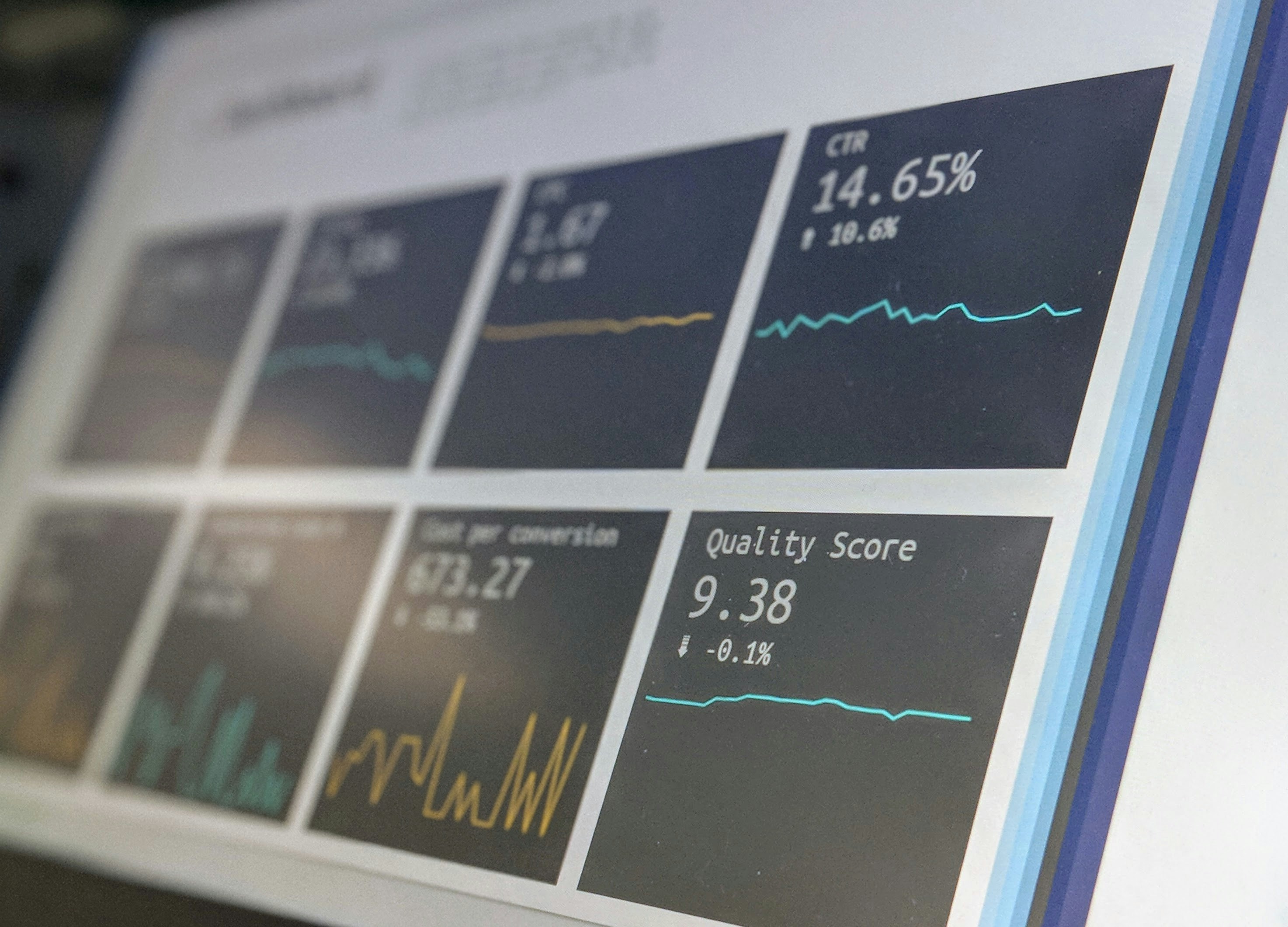Are you struggling to personalize your customers' experiences effectively? Crafting a seamless strategy for customer segmentation analysis can be daunting, but enhancing your marketing efforts is vital. Let’s explore how CDP personalization can help you achieve personalized marketing success and overcome CDP implementation challenges.
Looking to drive loyalty and growth, Rengage's solution offers robust personalization capabilities to help you overcome CDP implementation challenges.
Table of Contents
- The Importance of Customer Data Platforms
- Data Silos and Integration Issues
- Data Quality and Standardization
- Limited User Adoption and Internal Silos
- Balancing Personalization with Privacy Regulations
- Measuring the Success of CDP Personalization
- Choosing the Right CDP Partner
- Create Personalized Experiences That Drive Loyalty and Growth with Rengage — Book A Free Demo Today
The Importance of Customer Data Platforms

Personalization has become a common buzzword in marketing, and for good reason. It's no secret that customers are more likely to engage with brands that tailor their experiences to their preferences. But what makes customer data platforms (CDPs) the ideal tool for achieving these personalized experiences?
Unifying Customer Data
CDPs consolidate customer data from various sources and channels, creating a unified view of each customer. This wealth of data allows marketers to understand their customers better, enabling them to provide more relevant, personalized experiences.
Personalization Strategies with CDPs
Personalization using CDPs can increase customer engagement, boost conversions, and enhance customer loyalty. By tailoring marketing messages to individual preferences, customers are more likely to engage with your brand, leading to higher click-through rates. Personalized product recommendations and offers have been shown to improve conversion rates, driving sales and revenue growth significantly.
Building Brand Loyalty Through Personalized Marketing
When customers feel understood and valued, they are more likely to become loyal brand advocates. Building customer loyalty is critical for businesses looking to expand their customer base and increase lifetime value. With the competition for customers' attention growing fiercer daily, CDP personalization can give brands the edge they need to stand out in a crowded marketplace.
Related Reading
- Customer Data Infrastructure
- Omnichannel Analytics
- Customer Data Integration
- Predicting Customer Behavior
- Marketing Data Platform
- Customer Data Platform Vs Data Management Platform
- Customer Data Platform Use Cases
- Best Customer Data Platform
- Customer Data Platform Capabilities
- Customer Data Platform Tools
- How To Choose Cdp
Data Silos and Integration Issues

Data silos can hinder CDP personalization efforts by fragmenting customer data across various systems, such as CRM and marketing automation platforms. This fragmentation makes it challenging for the CDP to create a unified customer profile, impacting the accuracy and effectiveness of personalization strategies.
To overcome this obstacle, companies can invest in data integration tools that connect the CDP to different data sources, allowing centralized customer information. Standardizing data formats across systems can facilitate easier integration, enabling a more comprehensive and detailed view of customer data for improved personalization.
Related Reading
- Customer Retention Automation
- Customer Data Integration Best Practices
- Real Time Customer Segmentation
- Chat CDP
- Customer Data Platform Implementation
- Benefits Of A Customer Data Platform
- Customer Segmentation Solutions
- Omnichannel Measurement
- AI Customer Segmentation
- AI CDP
- Customer Data Platform GDPR
- Customer Data Platform Costs
Data Quality and Standardization

Delivering the Right Message at the Right Time
Personalization thrives on relevance. Inaccurate or outdated data can lead to mismatched recommendations, reducing the effectiveness of personalization efforts. A CDP can better understand customers with clean, high-quality data, resulting in highly relevant personalized experiences.
For example, leveraging accurate purchase history to recommend complementary products or suggesting items a customer has browsed but not yet purchased based on website behavior data.
Segmentation Accuracy: Targeting the Right Audience
Segmentation is a core personalization strategy. Low-quality data can make segmentation unreliable, leading to ineffective campaigns. Clean data ensures that segments accurately represent the customer base, allowing for targeted personalization that resonates.
For example, segmenting customers by age based on error-riddled birthdates could result in campaigns targeting the wrong age group.
Building Trust and Avoiding Negative Experiences
Irrelevant or inaccurate personalization can lead to customer frustration and damage brand trust. Data quality fosters trust by ensuring personalization feels genuine and relevant, strengthening customer relationships. For example, receiving an email birthday greeting with a personalized discount on a product the customer genuinely likes can create a positive experience.
Solutions to Ensure Data Quality
Data Cleansing
Regularly cleaning data to remove duplicates, correct errors, and update outdated information.
Data Governance
Establishing clear policies and procedures for data collection, storage, and usage to ensure data integrity within the CDP.
Data Validation
Implementing processes to validate data accuracy as it enters the CDP, such as integrating with external data sources or using data validation tools.
No-Code Customer Journey Management
We provide a comprehensive solution for managing and enhancing customer journeys, delivering insights and measurable outcomes with no code. We accelerate your customer journey from onboarding, activation to conversion and churn. Enabling customers to unlock revenue from their existing user.
With Rengage, you can get insights into your segments, run campaigns with an intuitive journey manager, and get insights to measure how your journeys impact users conversion through our Journey Moments and Journey Builder features:
- Journey Moments: insights into your micro-segments
- Journey Builder: intuitive multi-channel marketing automation
- Insights prediction and attribution.
Book a free demo to learn how to transform customer interactions into personalized experiences that drive loyalty and growth.
Limited User Adoption and Internal Silos

Limited user adoption can significantly impact the effectiveness of CDP personalization. When marketing teams are not fully familiar with the CDP's features and capabilities, they may underutilize the platform for personalization purposes. This lack of familiarity can lead to missed opportunities for creating personalized content, segmenting audiences effectively, or triggering targeted campaigns based on user behavior and preferences.
Missed Opportunities
If marketing teams are not actively using the CDP, they may miss out on valuable insights hidden within the data gathered and unified by the platform. These insights can provide vital information for creating highly personalized strategies, such as tailoring product recommendations based on past purchase behavior or sending relevant promotions to users based on their demographic or behavioral data.
Boosting User Adoption
Comprehensive training programs can bridge the knowledge gap to address limited user adoption and its impact on CDP personalization. Providing marketing teams with interactive tutorials, workshops, or dedicated support channels can empower them to use the CDP confidently for personalization. Increasing user adoption also hinges on the ease of use of the CDP itself, with an intuitive interface, clear navigation, and functionality descriptions being crucial elements that encourage active engagement with the platform.
Balancing Personalization with Privacy Regulations

Personalized experiences can raise privacy concerns. Regulations like GDPR and CCPA require companies to obtain customer data collection and usage consent. To address this challenge, companies must prioritize transparency and customer control by being transparent about how customer data is used for personalization and providing options for customers to manage their data privacy settings. Focusing on contextual personalization can also help personalize experiences based on non-identifiable customer behavior rather than relying solely on personally identifiable information (PII).
Rengage: A No-Code Platform for Personalized Customer Journeys with Measurable Results
We provide a comprehensive solution for managing and enhancing customer journeys, delivering insights and measurable outcomes with no code. We accelerate your customer journey from onboarding, activation to conversion and churn. Enabling customers to unlock revenue from their existing users.
With Rengage, you can get insights into your segments, run campaigns with an intuitive journey manager, and get insights to measure how your journeys impact users conversion through our Journey Moments and Journey Builder features:
- Journey Moments: insights into your micro-segments
- Journey Builder: intuitive multi-channel marketing automation
- Insights prediction and attribution.
Book a free demo to learn how to transform customer interactions into personalized experiences that drive loyalty and growth.
Measuring the Success of CDP Personalization

Personalization is a powerful tool, but you must track its impact to ensure it works effectively. Here's how to measure the success of your CDP personalization efforts:
Define Your Goals: Setting the Course
The first step is understanding what success looks like for your personalization efforts. Align your key performance indicators (KPIs) with those goals. These KPIs will be the metrics you use to gauge progress.
Common Personalization Goals and KPIs:
Increase Engagement
Track metrics like click-through rates (CTRs) on emails or website content to see if personalized experiences capture user attention.
Drive Conversions
For e-commerce sites, conversion rates the percentage of visitors who make a purchase) can indicate how effective personalization is in converting interest into sales.
Boost Customer Lifetime Value (CLTV)
Measure how much revenue a customer generates over time. Personalization that fosters loyalty and repeat purchases can contribute to higher CLTV.
Leverage Your CDP's Analytics: Harnessing Built-in Tools
Many CDPs come equipped with analytics dashboards and reporting tools. These tools can be a goldmine of information, allowing you to track the performance of your personalization campaigns.
Look for features that allow you to:
Compare Performance
See how personalized experiences stack up against generic content or communications.
Segment Analysis
Analyze how specific customer segments respond to different personalization tactics.
Track ROI
Some CDPs might offer features to estimate your personalization efforts' return on investment (ROI).
Choosing the Right CDP Partner

Matching Your Needs: Understanding Your Personalization Goals
In your quest to elevate your personalization strategy, you want a CDP that fits your brand’s requirements like a glove.
- Take a look at your data landscape. What kinds of data are you currently collecting, and how do you envision using them for personalization efforts? A CDP that effectively manages the customer data you gather is a must.
- Consider your personalization use cases. For example, are you looking to personalize email campaigns or tailor product recommendations on your website?
- Determining your specific goals ahead of time is key to ensuring the CDP you choose aligns with your personalization aspirations.
Future-Proofing: Scalability for Growth
Your brand is likely to experience growth over time, which means your customer data volumes will also expand. The last thing you need is a CDP that buckles under the weight of increasing data. Opt for a CDP that scales effortlessly to accommodate your projected growth and changing personalization needs.
Integration Harmony: Playing Well with Others
Personalization often requires multiple tools to work in harmony. When selecting a CDP, ensure it seamlessly integrates with your existing marketing technology stack. Whether it’s your email marketing platform, CRM system, or analytics tools, the smooth data exchange between these platforms is crucial for flawless personalization execution.
Additional Considerations
Security and Compliance
Safeguarding your customer data and complying with data privacy regulations is paramount. Choose a CDP with solid security measures and ensure its adherence to relevant data privacy laws. This will provide peace of mind that your customers’ information is protected.
Ease of Use
An intuitive platform is vital for maximizing your CDP's adoption and return on investment. Look closely at the platform’s user interface and gauge how easily your marketing team can navigate and leverage its features efficiently. After all, a user-friendly experience paves the way for seamless personalization endeavors.
Create Personalized Experiences That Drive Loyalty and Growth with Rengage — Book A Free Demo Today
Rengage provides a comprehensive solution for managing and enhancing customer journeys, delivering insights and measurable outcomes with no code. We accelerate your customer journey from onboarding and activation to conversion and churn, enabling customers to unlock revenue from their existing users.
With Rengage, you can get insights into your segments, run campaigns with an intuitive journey manager, and get insights to measure how your journeys impact users' conversion through our Journey Moments and Journey Builder features. Journey Moments provides insights into your micro-segments, while Journey Builder offers intuitive multi-channel marketing automation. The platform also offers insights, prediction and attribution to help you understand the impact of your marketing efforts.
Book a free demo to learn more about how you can transform customer interactions into personalized experiences that drive loyalty and growth.
Related Reading
- CDP Marketing Automation
- Customer Data Platform Vs Marketing Automation
- Ecommerce Cdp
- Totango Competitors
- Centralized Marketing Data
- Customer Data Management Best Practices
- Segment Alternatives
- Blueconic Cdp
- Emarsys Competitors
- Actioniq Competitors
